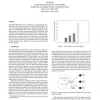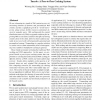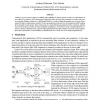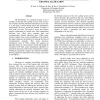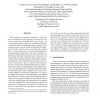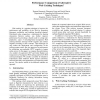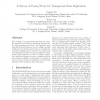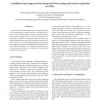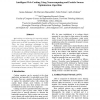CCR
1999
14 years 4 months ago
1999
The World Wide Web can be considered as a large distributed information system that provides access to shared data objects. As one of the most popular applications currently runni...
PDPTA
2003
14 years 6 months ago
2003
We are witnessing two trends in Web content access: (a) increasing amounts of dynamic and personalized Web content, and (b) a significant growth in “on-the-move” access using...
GVD
2004
14 years 6 months ago
2004
Caching is a proven means to improve scalability and availability of software systems as well as to reduce latency of user requests. In contrast to Web caching where single Web ob...
CAINE
2004
14 years 6 months ago
2004
On the Internet, it is common practice to use a computer to provide web caching services. Such services aim to reduce network utilization and improve access time to a web page. Li...
WISE
2002
Springer
14 years 9 months ago
2002
Springer
Web caching is an important technique for accelerating web applications and reducing the load on the web server and the network through local cache accesses. As in the traditional...
ISCC
2002
IEEE
14 years 9 months ago
2002
IEEE
Web caching is a popular technique to improve the performance and scalability of the Web by increasing document availability and enabling download sharing. Distributed cache coope...
WAIM
2004
Springer
14 years 10 months ago
2004
Springer
Abstract. Web caching plays an important role in many network services. Utilization of the cache in each level (server, proxy, and client) of network forms a web caching hierarchy....
SKG
2006
IEEE
14 years 10 months ago
2006
IEEE
Web caching is an important technology for reducing Internet access latency, alleviating network traffic, and spreading server load. An important issue that affects the performa...
IDEAS
2006
IEEE
14 years 10 months ago
2006
IEEE
Web caching and content replication techniques emerged to solve performance problems related to the Web. We propose a generic non-parametric heuristic method that integrates both ...
ASIAMS
2008
IEEE
14 years 11 months ago
2008
IEEE
Web caching is a technology for improving network traffic on the internet. It is a temporary storage of Web objects (such as HTML documents) for later retrieval. There are three s...
